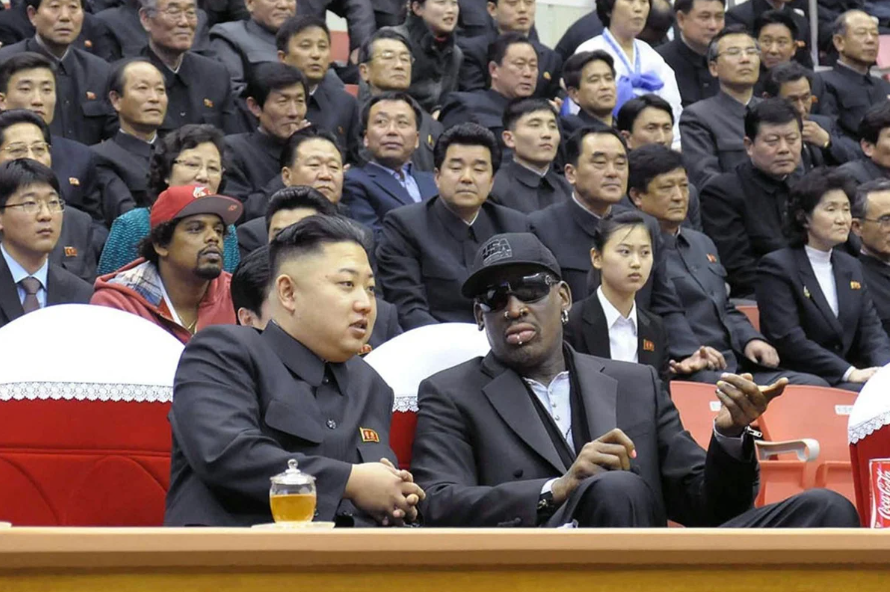Dennis Rodman made international headlines when he visited North Korea and spent time with leader Kim Jong-Un. The trip was described as an act of basketball diplomacy, a rare moment when cultural exchange overshadowed the heavily militarized narrative usually associated with Pyongyang. Rodman shocked the world by not only befriending Kim Jong-Un but also claiming that he had gained personal insights into the North Korean leader’s family life.
Rodman’s Claim About Kim Jong-Un’s Daughter Ju-Ae
Rodman told journalists that during his trip he had held Kim Jong-Un’s daughter, Ju-Ae, the child of Kim and his wife Ri Sol-Ju. According to Rodman, the meeting took place in a relaxed seaside setting, far from the rigid image North Korea projects to the outside world.

He emphasized that the North Korean leader lived a family-oriented lifestyle and enjoyed time with his wife and young daughter.
North Korea’s Secrecy About Leadership Families
The private lives of North Korea’s ruling elite remain among the most tightly guarded state secrets in the world. While Kim Jong-Un frequently appears in public surrounded by military officials and political cadres, details about his family are rarely disclosed.
North Korean state media almost never mentions his children, leaving outside observers reliant on foreign accounts like Rodman’s to piece together fragments of information. This secrecy fuels speculation, as international analysts and intelligence agencies attempt to determine the future line of succession.
While Rodman confirmed the presence of Kim’s daughter, no reliable reports confirm the absence of male children during his 2013 visit. The widely circulated phrase “no male children seen” has not appeared in major news outlets or verifiable archives.
Rodman’s Legacy of Controversial Statements
Rodman has long been a controversial public figure. Rodman’s visits to North Korea sparked both criticism and fascination, as many observers questioned whether Pyongyang’s propaganda machine was manipulating him. At the same time, his firsthand anecdotes such as his claim about Kim’s daughter provided rare glimpses into a secretive world.
We must understand Rodman’s statements within the context of his flamboyant personality and his tendency to make bold, attention-grabbing claims. While later evidence has confirmed some of his observations, others remain uncorroborated.
The gender and number of Kim Jong-Un’s children remain a matter of speculation with important political implications. If Rodman’s account of a daughter is accurate, it suggests that Kim is raising potential successors but leaves open questions about whether sons exist or whether Ju-Ae herself could eventually become the symbolic face of the dynasty.


 Kim Jong Un Expresses Gratitude to North Korea–China Ties
Kim Jong Un Expresses Gratitude to North Korea–China Ties  Donald Trump Expresses Willingness to Meet Kim Jong-un in 2025
Donald Trump Expresses Willingness to Meet Kim Jong-un in 2025  N. Korea quickly building large-scale greenhouse farm at border
N. Korea quickly building large-scale greenhouse farm at border  US joins Russia to vote against UN peace plan for Ukraine
US joins Russia to vote against UN peace plan for Ukraine  North Korean Soldiers Captured in Ukraine
North Korean Soldiers Captured in Ukraine